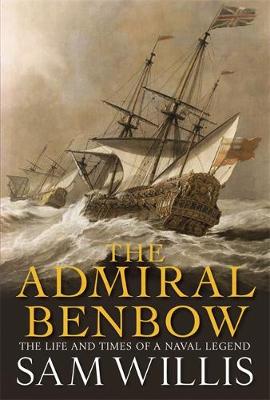Hearts of Oak Trilogy
1 primary work • 3 total works 3 total works planned
Vol. 1
J.M.W. Turner's The Fighting Temeraire Tugged to her Last Berth to be Broken Up (1838) was his masterpiece. Sam Willis tells the real-life story behind this remarkable painting. The 98-gun Temeraire warship broke through the French and Spanish line directly astern of Nelson's flagship Victory during the Battle of Trafalgar (1805), saving Nelson at a crucial moment in the battle, and, in the words of John Ruskin, fought until her sides ran 'wet with the long runlets of English blood...those pale masts that stayed themselves up against the war-ruin, shaking out their ensigns through the thunder, till sail and ensign dropped.' It is a story that unites the art of war as practised by Nelson with the art of war as depicted by Turner and, as such, it ranges across an extensive period of Britain's cultural and military history in ways that other stories do not.
The result is a detailed picture of British maritime power at two of its most significant peaks in the age of sail: the climaxes of both the Seven Years' War (1756-63) and the Napoleonic Wars (1798-1815). It covers every aspect of life in the sailing navy, with particular emphasis on amphibious warfare, disease, victualling, blockade, mutiny and, of course, fleet battle, for it was at Trafalgar that the Temeraire really won her fame. An evocative and magnificent narrative history by a master historian.
The Admiral Benbow covers all aspects of seventeenth century naval life in richly vivid detail, from strategy and tactics to health and discipline. But Benbow also worked in the Royal Dockyards, lived in Samuel Evelyn's House, knew Peter the Great, helped to found the first naval hospital, and helped to build the first offshore lighthouse. The second volume in the Hearts of Oak trilogy, from one of Britain's most exciting young historians, The Admiral Benbow is a gripping and detailed account of the making of a naval legend.
In The Glorious First of June Sam Willis not only tells, with thrilling immediacy and masterly clarity, the gripping story of an epic and complex battle, he also explains its critical importance for the development of British naval tactics and the concomitant growth of British sea-power. For it was in this battle that Lord Howe experimented successfully with the sophisticated line-breaking manoeuvres which, finessed and perfected by Horatio Nelson, would bring Britain to the apogee of its maritime supremacy with the defeat of Napoleon just 11 years later. With The Fighting Temeraire and The Admiral Benbow, The Glorious First of June forms part of 'The Hearts of Oak trilogy' of scholarly but accessible histories that, between them, encapsulate Britain's maritime achievement during the age of sail.


